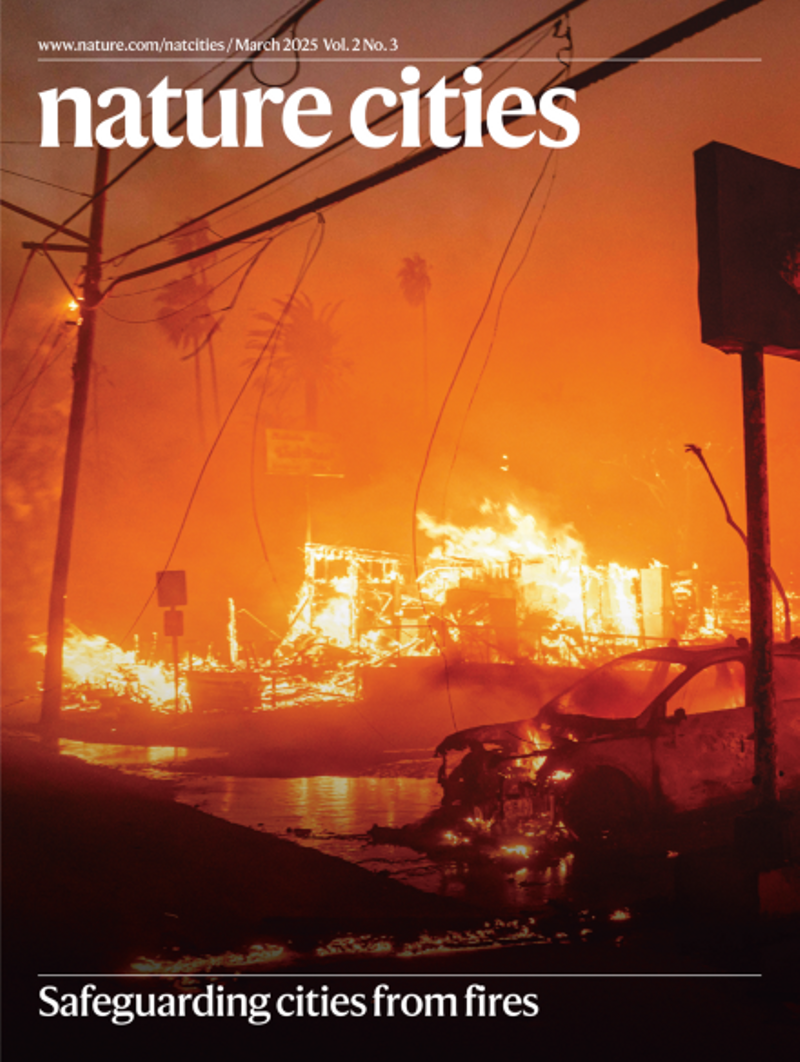Recently, the collaborative research result of the team of Professor Shi Long and Professor Zhang Heping of the University of Science and Technology of China (hereinafter referred to as "USTC") in the form of a long article and a cover paper in the form of a long article and a cover paper in the sub-journal "Nature". Nature Cities. This study reveals for the first time the impact mechanism of global warming on urban fire risk, and predicts the toll data of global fires on human lives under different climate change models in the future.
The research team collected fire accident data from 2,847 cities around the world, established the most comprehensive city-level fire accident database in the world to date (covering 20.6% of the world's population), quantified the intrinsic relationship between climate change and urban fire risk, and revealed the mechanism of climate change on the frequency of fire accidents in each city. Under the IPCC (Intergovernmental Panel on Climate Change) SSP 5-8.5 (Shared Socio-Economic Pathways – High Emissions Scenario) climate scenario, it is estimated that between 2020 and 2100, climate warming could directly cause 335,000 deaths and 1,153,000 injuries worldwide. While the 1.5°C climate target could reduce fire casualties by 50% under the SSP5-8.5 climate scenario, the number of casualties remains high.
The study provides quantitative recommendations for the allocation of fire budgets in countries and guides the development of climate adaptation strategies. The study found that by implementing regional, timely and accurate fire resource planning and optimizing the allocation of limited budget and resources, potential strategies can be directly applied to reduce fire casualties and property losses. Since there is still a lack of relevant fire risk indices in urban areas, the research results can also be used to develop fire hazard indices for different countries or cities, and the relevant databases have laid the foundation for future global fire risk analysis and the construction of fire data sharing platforms between countries.
The first author and corresponding author of the paper is Professor Shi Long of USTC, Associate Professor Wang Jinhui and Professor Zhang Heping of USTC are co-corresponding authors, and the Tianjin Fire Research Institute of the Ministry of Emergency Management, the National University of Singapore, RMIT University and Charles Darwin University are also co-authors.
Since its launch, the paper has been widely reported by mainstream media at home and abroad.
Associate Professor Wang Jinhui has long been committed to the research of fire safety, personnel evacuation, accident statistics and risk assessment in the field of ship and ocean engineering, and has presided over important projects such as the National Natural Science Foundation of China, the Shanghai Talent Program, the Shanghai Natural Science Foundation, and the Humanities and Social Sciences Project of the Ministry of Education. At the same time, as a core member of the ship, sea and port fire safety and prevention and control technical team, he actively participates in the school's organized scientific research activities and expands academic exchanges and cooperation inside and outside the school. The cooperation with the team of USTC and the research team of well-known overseas universities has produced high-level scientific research results, which has further enhanced the academic influence and international reputation of the safety science and engineering discipline of the university, and also laid a good foundation for the university to carry out subsequent research in related directions and promote the high-quality construction and development of safety disciplines.
Paper Links:https://www.nature.com/articles/s44284-025-00204-2

Figure 1 Cover page of the paper

Figure 2 a. Change in fire frequency (FFV) per 1°C increase in air temperature. FFV (in %) for all fire incidents in 2847 cities, with each point representing a city. All fires is a combination of all fire incidents collected by the fire department, fire frequency is defined as the number of fire incidents per thousand people per year, and the smoothing line indicates the relationship between latitude/longitude and FFV. b. Average FFV for different fire types in the 20 countries analysed. c. Average FFV of various fire types by continent.
